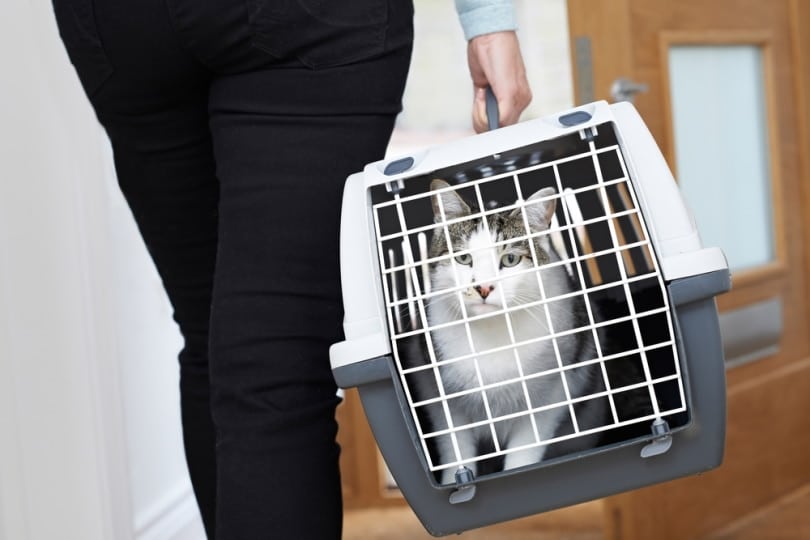As a cat owner, you may have wondered whether it’s permissible to bring your feline friend along when you visit your local PetSmart store. Cats are indeed welcome guests at PetSmart!
Read on for details about the in-store pet policy at PetSmart. We specifically focus on cats being allowed inside and the company’s policy on other pet types. Understanding this policy is crucial to ensure a pleasant shopping experience for both you and your furry companion.
Cats: Welcomed Guests at PetSmart
According to PetSmart’s in-store pet policy, domestic cats are indeed allowed inside its stores. This means that you can confidently bring your feline friend along when shopping for pet supplies, provided they meet certain requirements.
Before heading to the store, make sure your cat is appropriately secured, either on a leash or in a pet carrier, and vaccinated as required for their age and health status.

Additional Pets Allowed in PetSmart
Beyond cats, it’s essential to recognize that PetSmart also admits a range of other types of animals in its shops. These may include pet dogs, birds, small creatures, and reptiles sold by PetSmart, as well as non-venomous lizards, ferrets, rabbits, sugar gliders, and pot-bellied pigs.
As with cats, these pets should be securely leashed or always confined, and appropriate vaccinations must be administered prior to entry into the store.
Non-traditional Pets: Exceptions and Rules
PetSmart typically does not permit non-traditional pet breeds in their stores, but there are special circumstances allowed. Service animals with proper documentation as mandated by the federal Americans with Disabilities Act or state/local regulations may enter, along with those accompanying a pet to a Banfield Hospital visit.
Defining Non-traditional Pets
PetSmart regards any animal that falls outside the standard definition of a pet as non-traditional. To meet this criterion, it must be one of the following:
- Sold by PetSmart
- Eligible for adoption through an in-store partner
- Have supplies available to purchase at the store specifically designed for its breed or type
- Currently being treated at Banfield Hospital

As long as your pet meets the specified requirements and fits into one of these categories, it’s allowed inside PetSmart stores.
Remember that proper documentation may be requested at any time as proof of vaccinations or health status, so make sure you have this information on hand when visiting the store.
PetSmart’s Right to Modify Policy
It is always essential to be aware that PetSmart has the right to forbid any animal from entering its stores for whatever cause. It may also adjust its pet policy or part of it whenever and without warning.
Therefore, it’s important to confirm the up-to-date pet policy before arriving with your furry friend at the store.

Banfield Hospital Customers
When bringing your unique pet for their appointment at a Banfield Hospital, be sure to secure them in an enclosed carrier, crate, or kennel to avoid any exposure risks.
Your pet must remain inside that safe area until they are securely escorted into the exam room or designated kennel space of the hospital.
Conclusion
Cats are indeed allowed in PetSmart stores, provided they are leashed or safely confined and have received appropriate vaccinations. By following the guidelines in PetSmart’s in-store pet policy, you can ensure a smooth and enjoyable shopping experience for you and your feline friend.
Featured Image Credit: PetSmart (Image Credit: Anthony92931, Wikimedia Commons CC BY-SA 3.0)











